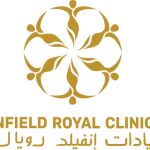Stretch marks in the process of Stretch Mark Removal, medically known as striae, are a common skin concern affecting people of all ages and genders. These visible streaks on the skin often result from rapid weight gain or loss, pregnancy, puberty, or certain medical conditions. While they pose no health risk, stretch marks can significantly impact one's self-esteem and confidence. Fortunately, several stretch mark removal procedures are available to address this issue.
Causes of Stretch Marks
Stretch marks develop when the skin stretches beyond its capacity, causing the collagen and elastin fibers to rupture. Factors such as hormonal changes, genetic predisposition, and rapid growth spurts contribute to the formation of stretch marks. Common areas prone to stretch marks include the abdomen, thighs, hips, buttocks, and breasts.
Understanding Stretch Mark Removal Procedures
Stretch mark removal procedures can be categorized into non-invasive and invasive treatments. Non-invasive options include topical creams, microdermabrasion, chemical peels, and laser therapy, while invasive procedures involve micro-needling, fractional laser therapy, and surgical interventions.
Non-Invasive Stretch Mark Removal Procedures
Topical creams and lotions containing ingredients like retinoids, hyaluronic acid, and vitamin E can help improve the appearance of stretch marks by increasing collagen production and promoting skin regeneration. Microdermabrasion and chemical peels exfoliate the skin, while laser therapy targets the affected areas with high-intensity light, stimulating collagen production and reducing discoloration.
Invasive Stretch Mark Removal Procedures
Micro-needling involves creating microscopic injuries in the skin using fine needles to trigger the body's natural healing process. Fractional laser therapy targets specific areas of the skin, delivering intense heat to stimulate collagen production. Surgical options such as abdominoplasty (tummy tuck) may be recommended for severe cases of stretch marks, particularly after significant weight loss or pregnancy.
Effectiveness and Risks
The effectiveness of stretch mark removal procedures varies depending on factors such as the severity of the stretch marks, skin type, and individual response to treatment. While these procedures can yield significant improvements in skin texture and appearance, they may also carry risks such as skin irritation, redness, swelling, and scarring.
Considerations Before Choosing a Procedure
Before undergoing a stretch mark removal procedure, it is essential to consider factors such as skin type, budget, and recovery time. Consulting with a dermatologist or plastic surgeon can help determine the most suitable treatment option based on individual needs and preferences.
Preparing for a Stretch Mark Removal Procedure
Prior to the procedure, patients will undergo a comprehensive consultation to assess their candidacy and discuss expectations. Pre-procedure instructions may include avoiding certain medications, skincare products, and sun exposure to minimize the risk of complications.
What to Expect During the Procedure
The duration of a stretch mark removal procedure varies depending on the chosen treatment modality. Patients may receive local anesthesia or numbing cream to minimize discomfort during the procedure. While some procedures may cause temporary discomfort or mild pain, most patients tolerate them well.
Recovery Process
Following the procedure, patients will receive post-procedure care instructions to facilitate healing and optimize results. The recovery period may range from a few days to several weeks, depending on the treatment modality. It is normal to experience redness, swelling, and mild discomfort during the initial stages of recovery.
Maintaining Results
To maintain the results of a stretch mark removal procedure, individuals are advised to adopt healthy lifestyle habits such as regular exercise, a balanced diet, and adequate hydration. Follow-up treatments may be recommended to achieve optimal outcomes and address any residual stretch marks.
Common Myths About Stretch Mark Removal
There are several misconceptions surrounding stretch mark removal procedures, such as the belief that they are entirely permanent or that DIY treatments yield similar results. It is essential to separate fact from fiction and consult with qualified professionals for accurate information and guidance.
Real-Life Experiences
Many individuals have successfully undergone stretch mark removal procedures and experienced significant improvements in their skin's appearance and texture. Testimonials from satisfied patients can provide valuable insight into the efficacy and benefits of these treatments.
Consulting a Professional
When considering a stretch mark removal procedure, it is crucial to seek advice from board-certified dermatologists or plastic surgeons with extensive experience in cosmetic dermatology. Avoiding DIY treatments and unlicensed practitioners can help ensure safe and effective results.
Conclusion
In conclusion, Stretch Mark Removal in Riyadh procedures offers viable solutions for individuals seeking to address this common cosmetic concern. By understanding the causes of stretch marks and exploring the various treatment options available, individuals can make informed decisions to achieve smoother, more radiant skin. Consulting with qualified professionals and following post-procedure care instructions are essential steps in achieving optimal results and maintaining skin health.






Comments